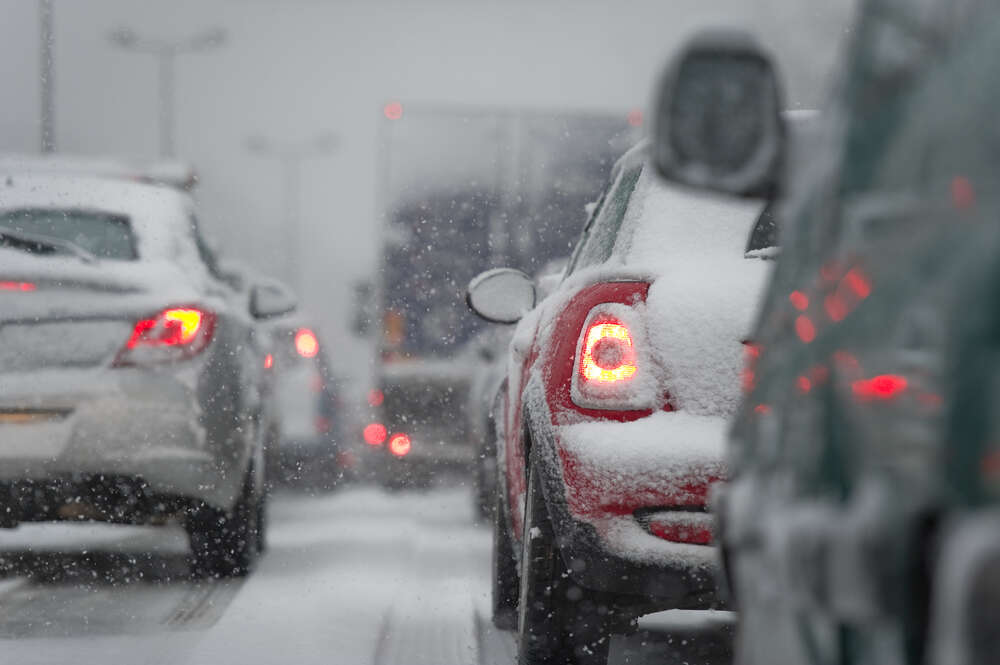
Changing weather conditions – heavy rain, wind, ice and snow – pose a variety of dangers and, even in a single journey, drivers may encounter a variety of weather extremes. As drivers, we must all adapt to the challenging conditions to keep ourselves and other road users safe. But what do city-dwellers do to prepare for winter driving?

Prepare your car for winter driving
1. Book a service
Cold weather can cause a variety of problems for cars. A service will make sure essential fluid levels such as antifreeze and oil are topped up, and that there are no obvious safety concerns with your car that could be significant on the road.
2. Check and replace the battery
For a battery that is already past its best, the cold weather can be brutal. Sub-zero temperatures and extra use of the vehicle’s lights and heating can drain it of the little energy it has left, so a car that refuses to start is commonplace in winter. If there are signs that your car is less than cheerful about starting, have the battery tested and, if necessary, replace it.
3. Check the tyre tread and pressure
By law, there must be at least 1.6mm of tread left at all points on your car’s tyres, but tyre manufacturers recommend a minimum of 3mm to ensure better grip in wet or icy conditions.
It is also important to ensure that the tyres are inflated to the pressure recommended by your vehicle’s manufacturer. Tyres that are underinflated increase both the braking distance, especially when the road is slippery, and fuel consumption.
4. Improve your visibility
You’re more likely to be driving in the dark during the winter, so you’ll rely heavily on your lights, not just your GPS. Make sure that all lights, indicators and reflectors are clean and in working order, not forgetting fog lights and full beam bulbs. You should also check for tears or nicks along the wiper blades, replacing these if necessary.
5. Pack an emergency weather kit
Never presume that, in wintry weather, you’ll be able to complete your journey uninterrupted. With extreme weather becoming more common in the UK, becoming stranded is no longer unusual and, without the correct provisions, you could suffer in plummeting temperatures. Even on busy urban roads, it can take several hours for breakdown support to reach you, so it’s always best to prepare for the worst.
An emergency weather kit should include a shovel, thick blanket or sleeping bag, a torch, mobile phone charger, high-vis vest and plenty of food and drink.
Common winter driving dangers and how to manage them
Strong winds
Gale-force winds are not uncommon in the UK. When winter driving in wind, reduce your speed and give greater focus to maintaining a steady line on the road. Gusts can be unpredictable and sudden, especially over bridges and open roads. Remain calm, take your time and keep your speed down.
You will also have to be wary of cyclists sharing the road, as windy conditions can blow them off course more easily – be sure to give them extra room when overtaking.
Aquaplaning
Aquaplaning occurs in very wet conditions when the tyres of a vehicle lose contact with the surface of the road. To prevent it, you should drive more slowly in wet weather and, where possible, avoid large puddles.
If the car does aquaplane, it’ll seem to slide unpredictably as it enters the water. Avoid braking or steering suddenly as this could lead to an uncontrollable skid. Simply ease off the accelerator and, as the speed drops and the car moves out of the water, the tyres will grip the road again and provide you with greater traction and control.
Snow and ice
Snow and ice are exceptionally dangerous. If you must travel, then aim to drive slowly and steadily, avoiding sudden acceleration or braking. Don’t brake on bends if possible, and use high gears to increase the traction and provide you with a better grip on the road.
Fog
Thick fog is dangerous because it obscures your vision and you cannot see obstacles ahead. Reducing your speed significantly is vital to keeping you safe. Turn on your fog lights to make your car visible to others and avoid driving too closely to the vehicle ahead. Staying safe when winter driving is a lot about common sense. By taking a little extra time to prepare for the conditions, driving at a slower speed and keeping a firm eye on the road ahead, you can be more confident of arriving at your destination safely, if not always on time.
[Read more: Cities have a parking problem. More parking is not the solution.]






